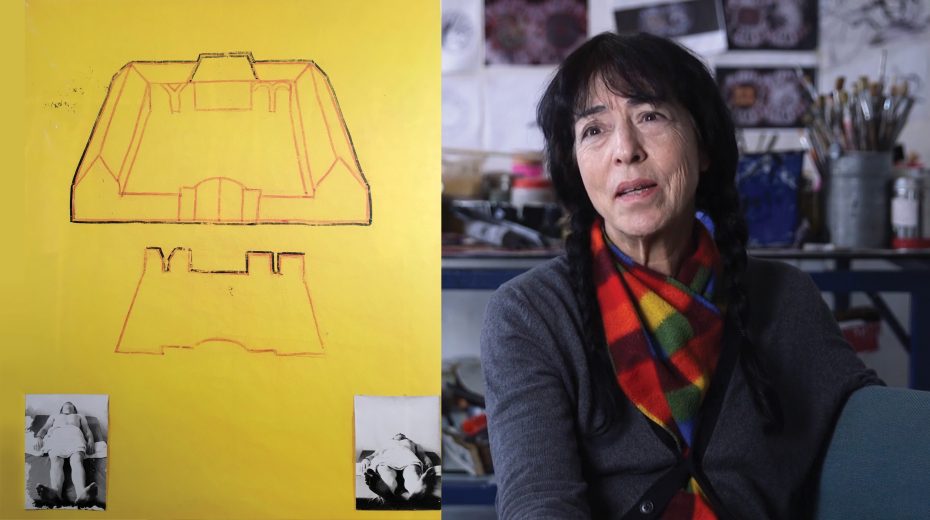In 1981, she received the Jacques O’Hana Prize for the Young Israeli Artist from Tel Aviv Museum, and in 1994 was recognized with the Minister of Science and the Arts Prize.
The use of Christian motifs in her work appeared first in a series of paintings known as the “Tel Hai” cycle, created between 1974 and 1978. Getter started painting the series just after the Yom Kippur War, a defining moment for many Israelis. In Israeli culture, Tel Hai embodies the ideal of heroism. In March 1920, Arabs attacked the small Upper Galilee outpost of Tel Hai, killing the acclaimed Zionist military leader Joseph Trumpeldor. The last words of the dying hero, “it is good to die for our country,” which inspired young Zionists for decades after, had by the time of the 1973 war lost their charm.
Getter, a hand amputee just like Trumpeldor, challenged the Zionist model of heroism by equating Trumpeldor with Jesus. The work seen here shows a flat rough blueprint of the shabby fortress at Tel Hai, scorched by the bright yellow background. At...
Become a Member
-
Read all member content
Get exclusive in-depth reports from Israel.
-
Get exclusive in-depth reports from Israel
Connect with Israel, right from your home.
-
Lift up the voice of truth and hope
Support Jerusalem-based Zionist journalism.

Already a member? Login here.












